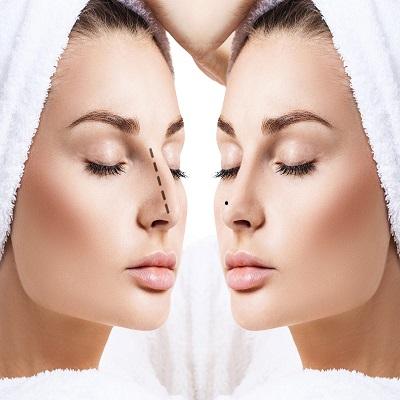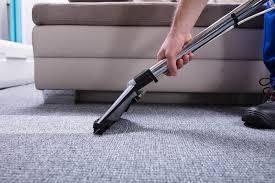Types of Rhinoplasty: Cosmetic vs Functional

Rhinoplasty is a surgical procedure that has evolved to serve not only aesthetic goals but also medical and functional purposes. Often referred to as a “nose job,” rhinoplasty can dramatically improve the appearance of the nose or resolve structural issues that impair breathing. Individuals considering Rhinoplasty in Islamabad must first understand the distinction between cosmetic and functional rhinoplasty, as each type serves a unique purpose and requires different considerations before and after surgery.
Choosing the right form of rhinoplasty depends on your personal goals, medical needs, and the recommendations of a qualified facial plastic surgeon. Whether you're aiming to reshape your nose for a more balanced facial profile or seeking relief from chronic breathing problems, it's important to know what each procedure entails.
Cosmetic Rhinoplasty
Cosmetic rhinoplasty focuses on enhancing the nose’s appearance to achieve better harmony with the rest of the face. This type of rhinoplasty is purely aesthetic and is often performed for individuals who are unhappy with the shape, size, or proportions of their nose.
Common Goals of Cosmetic Rhinoplasty
-
Reducing or refining the nasal bridge
-
Reshaping the nasal tip
-
Straightening a crooked nose
-
Narrowing wide nostrils
-
Adjusting nasal symmetry
These enhancements aim to create a more balanced and proportionate facial appearance. Many patients seek cosmetic rhinoplasty due to dissatisfaction with natural features, while others may pursue it to correct imperfections from previous surgeries or injuries.
Techniques Used
Cosmetic rhinoplasty may be performed using either an open or closed surgical approach:
-
Open rhinoplasty involves a small incision across the columella (the tissue between the nostrils), allowing greater access and visibility for complex reshaping.
-
Closed rhinoplasty involves incisions made inside the nostrils, leaving no visible external scars. This approach is often suitable for less extensive changes.
The choice of technique depends on the complexity of the case and the surgeon’s recommendation.
Recovery and Results
Recovery from cosmetic rhinoplasty usually takes about 7 to 10 days for initial swelling and bruising to subside, although full results can take up to a year to stabilize. Most patients return to work or social activities within two weeks. The outcome is generally permanent, though subtle changes may continue to occur as tissues settle.
Functional Rhinoplasty
Functional rhinoplasty is performed to correct structural problems inside the nose that interfere with normal breathing or contribute to chronic issues such as sinus infections, snoring, or nasal obstruction. This type of rhinoplasty may or may not involve visible changes to the external nose, depending on the underlying problem.
Common Indications for Functional Rhinoplasty
-
Deviated septum (septoplasty)
-
Collapsed nasal valves
-
Nasal trauma
-
Congenital abnormalities
-
Sleep apnea due to nasal blockages
While cosmetic enhancements may still be included during functional procedures, the primary goal is to restore or improve nasal airflow.
Combining Functional and Cosmetic Goals
Many patients choose to address both cosmetic and functional concerns in one procedure. This combined approach not only improves breathing but also refines the appearance of the nose, minimizing the need for a second surgery later. For example, a patient with a deviated septum may also opt to smooth a nasal hump or lift a drooping tip during the same operation.
Insurance may cover part or all of the functional rhinoplasty cost if it’s medically necessary, though cosmetic components are typically paid out-of-pocket.
Choosing Between Cosmetic and Functional Rhinoplasty
Determining which type of rhinoplasty you need starts with a thorough consultation with a board-certified surgeon. During this evaluation, your breathing, nasal structure, and aesthetic goals will be reviewed. Depending on the findings, the surgeon may recommend cosmetic, functional, or combination rhinoplasty.
Key factors to consider include:
-
Do you have difficulty breathing through one or both nostrils?
-
Have you experienced trauma to the nose that affects structure or airflow?
-
Are you dissatisfied with the shape or size of your nose?
-
Are your concerns primarily about appearance, function, or both?
Understanding your motivations will guide the decision-making process and ensure you receive the most appropriate treatment for your needs.
Surgical Techniques and Considerations
The surgeon’s approach will vary depending on whether the procedure is cosmetic, functional, or both. Functional rhinoplasty often involves cartilage grafting, nasal valve repair, or turbinate reduction, whereas cosmetic procedures are focused on sculpting and reshaping the nasal contours.
An experienced surgeon will take into account:
-
The thickness of your skin
-
Nasal symmetry
-
Breathing function
-
Facial balance
-
History of trauma or surgery
These variables influence both the technique used and the expected outcomes. Achieving a natural look and maintaining or improving nasal function requires a balance of surgical artistry and technical skill.
Recovery and Aftercare
While the recovery process is similar for both types of rhinoplasty, patients undergoing functional procedures may experience less swelling or bruising if minimal changes are made to the nasal framework. Standard recovery tips include:
-
Sleeping with the head elevated
-
Avoiding strenuous activity for at least two weeks
-
Keeping nasal splints and dressings intact until removed by the surgeon
-
Using prescribed medications to reduce inflammation or discomfort
Following post-operative care instructions is vital to healing properly and maximizing results.
Why Surgeon Selection Matters
Whether you're undergoing cosmetic or functional rhinoplasty, the surgeon’s experience and qualifications directly impact the safety and success of the procedure. A well-trained rhinoplasty specialist understands both the internal anatomy and external aesthetics of the nose and tailors the approach to your unique goals.
During your consultation, ask to see before-and-after photos of similar cases and make sure the clinic offers comprehensive pre- and post-operative support. Open communication with your provider will help you set realistic expectations and feel more confident about your decision.
Where to Go for Rhinoplasty in Islamabad
Choosing the right clinic for rhinoplasty is essential, not only for achieving the aesthetic result you desire but also for ensuring your safety, comfort, and long-term satisfaction. Whether you’re interested in enhancing your appearance or resolving a breathing issue, working with a reputable, experienced team can make all the difference.
At SKN Cosmetics clinic, patients receive expert care in both cosmetic and functional rhinoplasty procedures. With personalized consultations, advanced techniques, and a focus on natural-looking outcomes, SKN Cosmetics is a leading destination for rhinoplasty in Islamabad.






